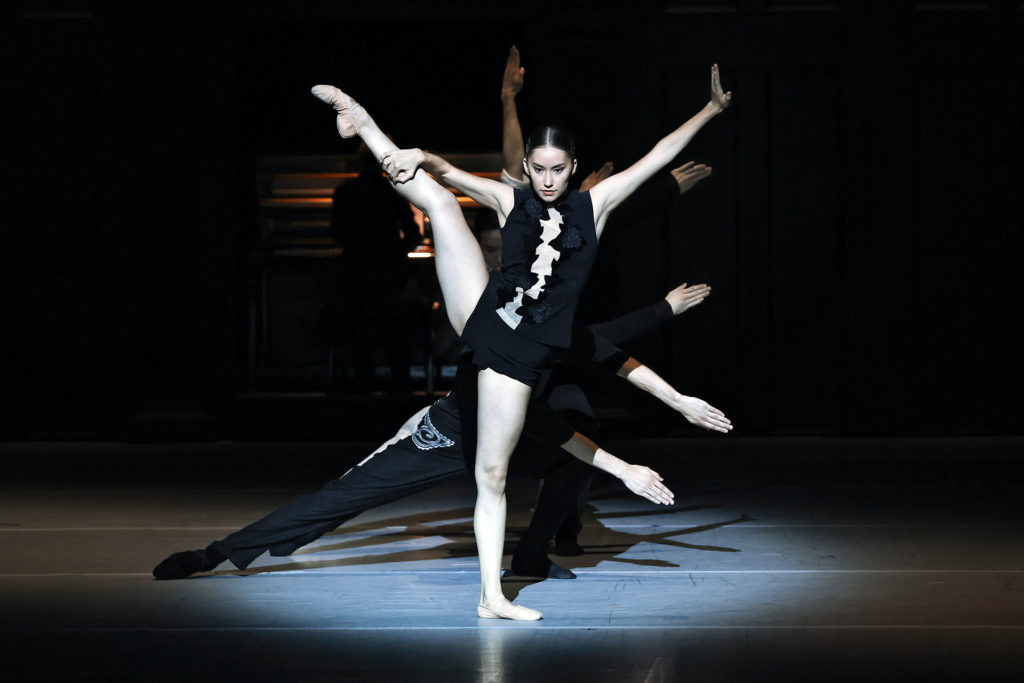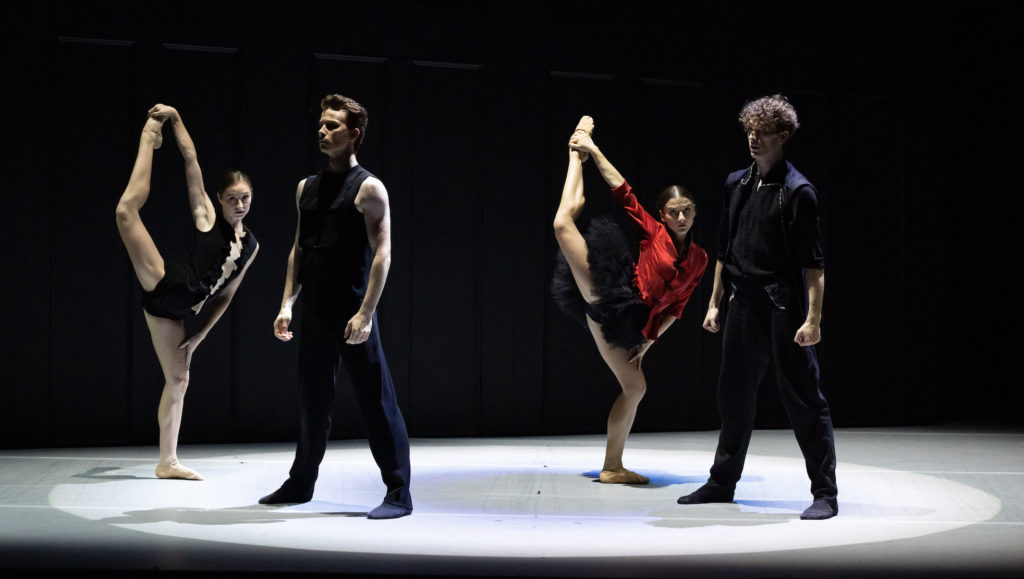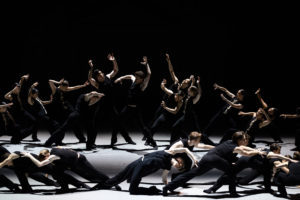Kunstkamer: NDT’s “beautiful monster” at Australian Ballet - Vancouver Ballet Society
- Home
- Reviews 2020 - 2023
- Kunstkamer: NDT’s “beautiful monster” at Australian Ballet

By Deborah Jones
David Hallberg serenely slid to the floor, legs immaculately split, then turned to the audience in the Sydney Opera House. “Ouch,” he said. The moment was pure Kunstkamer, the work that lured Hallberg back to the stage after a two-year absence. Originally made for Nederlands Dans Theater in 2019, it’s a huge, complicated, magical, sometimes eccentric piece that Hallberg was passionate about bringing to the Australian Ballet, where he has been artistic director since the beginning of last year. One of the choreographers (there are four), Sol León, told Hallberg that if Kunstkamer were to be done by his company he needed to be in it. There was one role that not just anyone could do, a unique part for a unique artist. Hallberg said yes.

The character is a kind of spirit guide through Kunstkamer, a person who mysteriously appears and disappears through many doors in the moving walls that constantly reshape the performance space. Even when seen fleetingly, Hallberg, who is 40 this year, made an arresting impression with his unearthly physical beauty, aristocratic bearing, and magnetic presence. In several solos he thrilled with the still shining perfection of his elegant line and utterly extraordinary feet.
Marvellous though it was to see Hallberg dance (he says he probably won’t again), his artistic vision is even more exciting. Kunstkamer is the first big work Hallberg has brought to the Australian Ballet and it has been mind-expanding for dancers and audiences.

The title can be translated as “room of art” and was inspired by Albertus Seba’s 1731 book Cabinet of Natural Curiosities. Just as Seba gathered strange and exquisite specimens from the natural world, Kunstkamer collects and arranges ideas, movements, and sounds to examine life’s wondrous complexity. Paul Lightfoot, artistic director of NDT from 2011 to 2020, was the work’s prime mover. The idea was to celebrate NDT’s 60th anniversary, not with a bits-and-bobs program of past successes, but something rather more ambitious. Most of Lightfoot’s choreography has been made with León but this time they would create individually alongside Crystal Pite and Marco Goecke. There would not be discrete slabs of dance from each, one after the other, but a heady mixture of movement to a rich, eclectic selection of music by Bach, Janis Joplin, Schubert, Arvo Pärt, Purcell, Ólafur Arnalds, and more.
The approach evokes a museum or art gallery in which objects by different artists are put side by side to spark new ways of thinking, seeing, and feeling. There’s an abundance of arresting images. A woman falls from an upper level to be caught by a group of men below, twice. A pianist is seen at the back of the stage playing Schubert as dancers gather. Pite’s trademark massed forces bring as many as 45 dancers together. For a few minutes near the end, the dancers sing Purcell’s See, See, We Assemble from his “semi-opera” King Arthur. There are solos, duos, small groups, big groups, and a bit of text. And on it goes for about two hours (plus an interval) — so much dancing and so much ravishing music.
No wonder Lightfoot has described the work as a “beautiful monster.”

Goecke contributed jittery, manic, elastic exaggerations to jaunty Strauss polkas, an unlikely partnership if ever there was one. It was strangely touching, actually. Even though much of the movement had a mechanical quality it was always possible to see the person within. Marcus Morelli was exceptional in this respect.
Pite brought the whole company together, making the blood pump and eyes well to the sounds of Beethoven and Schubert. León created indelible dramas, first in a ghostly, heart-stoppingly lovely film that opened Kunstkamer and then in a pas de deux of almost shocking intimacy, danced incandescently on opening night by Benedicte Bemet and Callum Linnane. Striking groups and solos came from Lightfoot, made to pizzicato music by Bartók and Britten.
The Australian Ballet is a ranked company but Kunstkamer doesn’t bow to hierarchy. Bemet and Linnane are principals but dancers from the corps were featured as prominently as those nearer the top of the tree. On opening night Adam Elmes, for instance, danced alongside Hallberg as something of an alter ego or shadow. Elmes was also outstanding in last year’s Watermark, a premiere from Pam Tanowitz that was Hallberg’s first commission for the Australian Ballet.
Kunstkamer was not a safe choice, although it had its logic. The Australian Ballet turns 60 at the end of this year and the works of former NDT artistic director Jiří Kylián are well represented in the repertoire. But few, if any, current Australian Ballet members are steeped in the NDT style. They had to dig deep to discover new ways of moving and being on stage and did it magnificently.
The Sydney season of Kunstkamer ends on May 14. The Melbourne season runs June 3-11, with a livestream on June 10.

